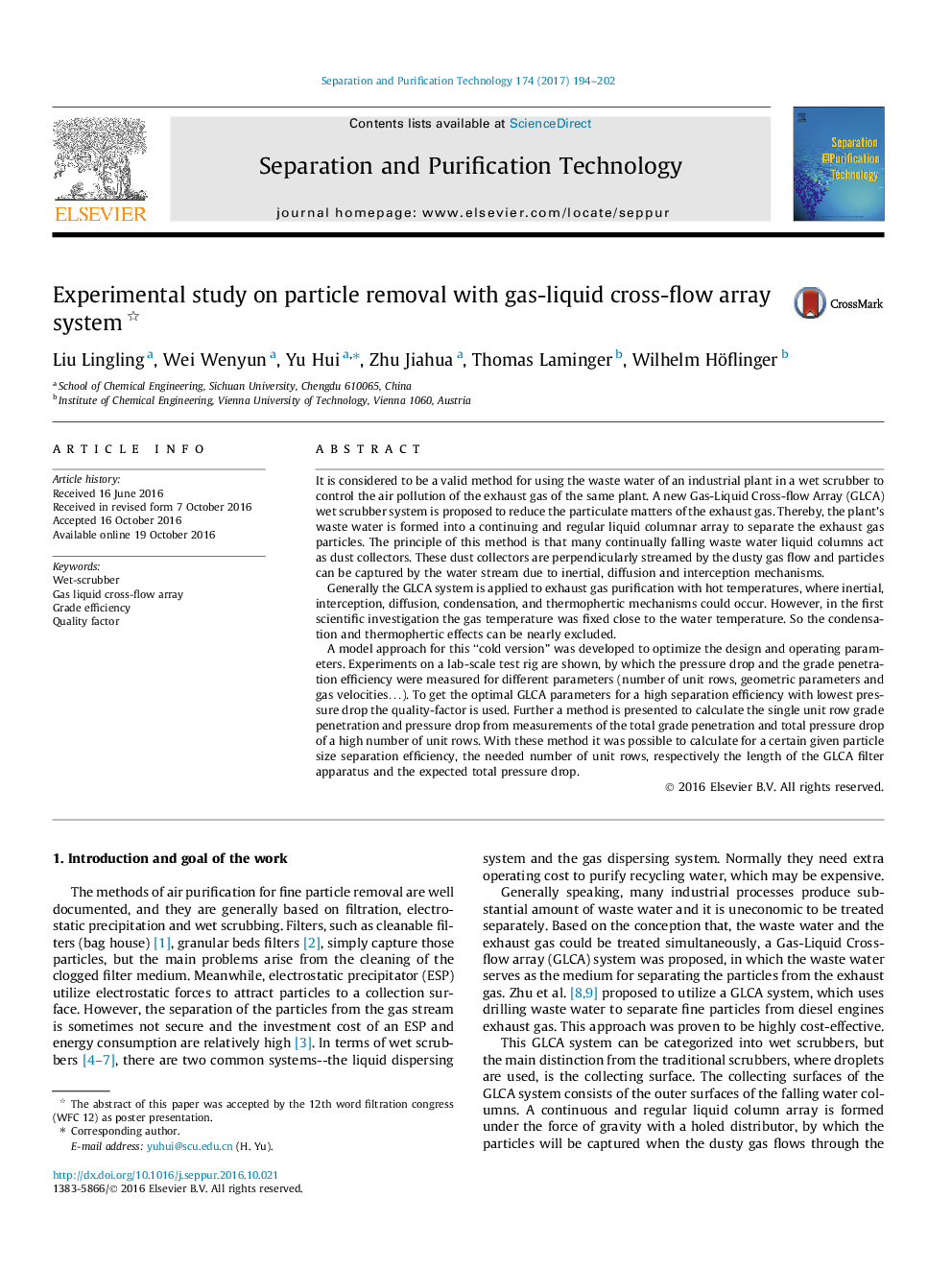| Article ID | Journal | Published Year | Pages | File Type |
|---|---|---|---|---|
| 4990180 | Separation and Purification Technology | 2017 | 9 Pages |
Abstract
A model approach for this “cold version” was developed to optimize the design and operating parameters. Experiments on a lab-scale test rig are shown, by which the pressure drop and the grade penetration efficiency were measured for different parameters (number of unit rows, geometric parameters and gas velocitiesâ¦). To get the optimal GLCA parameters for a high separation efficiency with lowest pressure drop the quality-factor is used. Further a method is presented to calculate the single unit row grade penetration and pressure drop from measurements of the total grade penetration and total pressure drop of a high number of unit rows. With these method it was possible to calculate for a certain given particle size separation efficiency, the needed number of unit rows, respectively the length of the GLCA filter apparatus and the expected total pressure drop.
Keywords
Related Topics
Physical Sciences and Engineering
Chemical Engineering
Filtration and Separation
Authors
Liu Lingling, Wei Wenyun, Yu Hui, Zhu Jiahua, Thomas Laminger, Wilhelm Höflinger,
